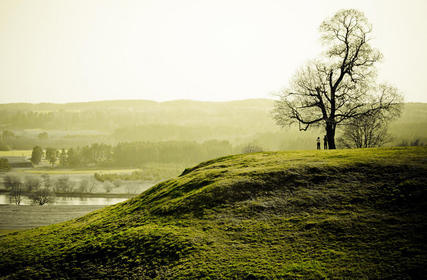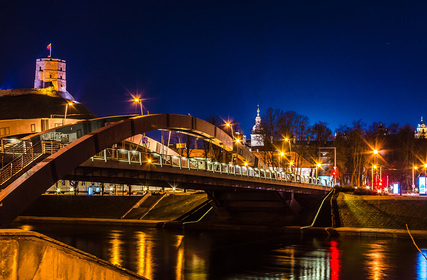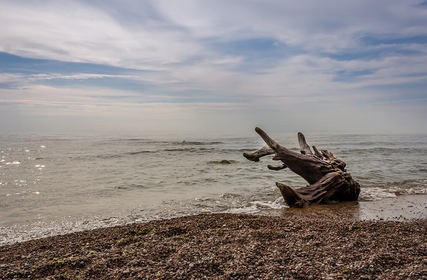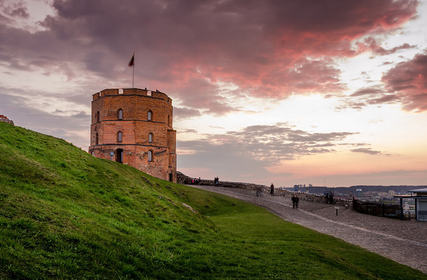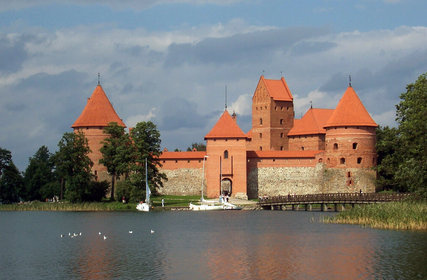Most popular locations in Lithuania
-
Vilnius
Vilnius, Lithuania’s capital, is located in the southwest of the country at the confluence of the Neris and Vilnia rivers. Often overlooked as a destination, Vilnius will break any stereotypes of ...
-
Karmelava
Karmėlava is situated in the Kauno Apskritis region in Lithuania, and is best known for being the location for the Kaunas International Airport which is Lithuania’s second busiest commercial airpor...
-
Palanga
Palanga is found in western Lithuania on the Baltic coast and while it was originally a fisherman’s village, today it moonlights as Lithuania’s most popular beach resort. Easily reached by a direc...
-
Klaipeda
Klaipėda is Lithuania’s third largest city found in the northwest of Lithuania, and functions as the country’s only harbor city. A major seaport and cruise ship destination, the city offers a char...
-
Kaunas
-
Druskininkai
Lithuania is situated on the Baltic Sea coast and is one of Europe’s less discovered destinations despite the fact it is cheaper to visit than most Western European countries.
Explore pedestrianized alleys of the capital city Vilnius or hire a rental car to discover further afield where you’ll find medieval castles that are perfect examples of Baroque and Gothic architecture, quiet villages with folk art and a stunning countryside sprinkled with rolling hills and waterways.
A brief history
Lithuanian borders have been fought over through time by Polish, Teutonic and Russian rulers.
The immense political history has resulted in museums brimming with exhibits detailing Jewish deportations, literature about military occupations and stunning churches built to the orders of Grand Dukes.
Independence was restored in the late 20th century, and Lithuania is gaining more confidence as a nation with modern skyscrapers, the expansion of international companies (passenger sea lines, telecommunications) and stability of the job market to balance emigration.
When to go
Late spring is an ideal time of the year to visit Lithuania with warm weather and less crowds than the height of summer. May in particular is lovely as the green fields are scattered with wildflowers.
Summer months from early June through to August are typically the peak season months and this means you’ll be trying to source accommodation when everyone else is and you will need to reserve rental cars in advance. The hot and dry days may also experience occasional showers as Lithuania is prone to changeable seasons, but otherwise summer should not pose too much of a problem travel-wise.
Winter in Lithuania can be lengthy and stretch from mid-November to March so you should be aware that many regions will be covered in snow with snow ploughs only on major arterial roads and highways, and rural areas are difficult to access or tour without a 4WD vehicle.
Getting around
Public transport in Lithuania covers broad networks, though it is recommended to buy long-distance bus and train tickets far in advance. Unusually for Europe, trains are relatively slow and you should be prepared to travel on crowded trolleybuses and trams, especially in Vilnius.
Lithuania has a flat landscape marked with rolling hills, gentle plains, rivers and lakes. There are no tortuous mountain routes to navigate, so it is an ideal country to drive around.
A hire car is a sensible option if you want to travel at your own pace in Lithuania, and you will find good autobahns connect major cities like Vilnius, Kaunas and Klaipėda.
Meet the locals
Tourists to this fascinating country will learn that Lithuanians have a great appreciation of nature and any outdoors pursuit will offer a prime opportunity to meet the locals.
Make a pilgrimage to the sand dunes at Curonian Spit on the Baltic Coast that are the largest dunes in Europe, float in a hot air balloon over national parks populated with wildlife such as beavers, bears and deer or take your pick from one of Lithuania’s 8000 lakes to try rafting or fishing.
Lithuania has a strong musical heritage. Watch a traditional folk music and dance performance in a countryside village, or buy a ticket to see the National Symphony Orchestra at the National Philharmonic Hall in Vilnius.
Sun worshippers and party animals should add Palanga to their travel itinerary. As Lithuania’s busiest beach resort on the west coast, this is the place to be to meet locals who are seeking sun, sea, sand and live music.
Culture & customs
Family and religion (especially Roman Catholicism) are the centers of social structure in Lithuania with celebrations and festivals revolving around these. Lithuanians are generous people and if you are invited to someone’s home it is customary to take a small gift like candy.
Lithuanian’s love to celebrate and there are 11 national holidays you can encounter when you visit the country. Some are dates recognised in other cultures such as Easter and Christmas Day; others are holidays that are specific just to Lithuania like Žolinė in August when herbs are sanctified, and the Kaziukas folk arts and crafts festival held in March.
Food and drink are significant to Lithuanians and you will rapidly realise you have stepped foot into a beer drinking country! National cuisine reflects that the climate is cold for much of the year so you will find menus comprised of warm, wholesome food like smoked meats, soups and beets and dishes such as cepelinai (stuffed potato dumplings). The meal on Christmas Eve, Kūčios, is one of the most important celebrations during the year with 12 meatless dishes prepared that signify the 12 Apostles.
- Airports in Lithuania
- Cities in Lithuania




